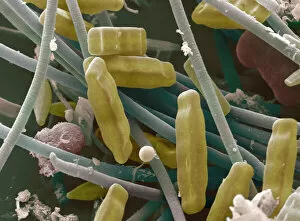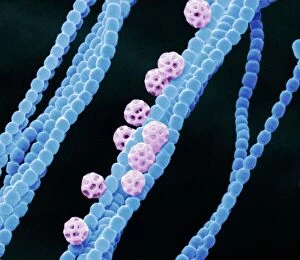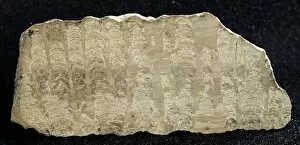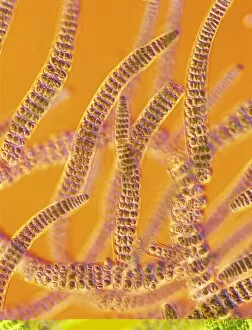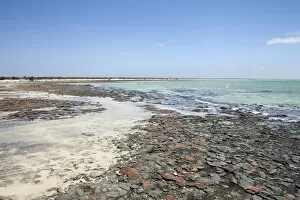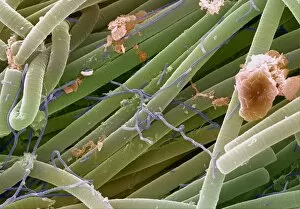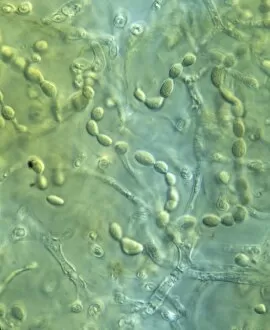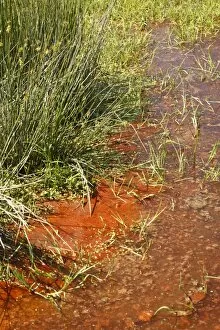Blue Green Algae Collection
"Exploring the Intricate World of Blue Green Algae: A Microscopic Journey" Intriguing and mesmerizing
For sale as Licensed Images
Choose your image, Select your licence and Download the media
"Exploring the Intricate World of Blue Green Algae: A Microscopic Journey" Intriguing and mesmerizing, blue green algae captivate our attention as we delve into their microscopic realm. Through scanning electron microscopy (SEM), diatoms and blue-green algae reveal their intricate structures, showcasing nature's artistic prowess. Cyanobacteria, a prominent member of this diverse group, astound us with their SEM images. Oscillatoria, a cyanobacterium viewed under a light microscope, displays its unique filamentous structure that resembles tiny strings dancing in unison. Delving deeper into the world of microorganisms, we witness the fascinating process of protozoan sexual reproduction through SEM Z105/0240. The delicate beauty of Paramecium protozoa is unveiled through SEM Z105/0239, revealing its intricate cilia-covered surface. Amongst the vast array species lies Nostoc C014/3088 and Nostoc C014/3089. These captivating organisms showcase their vibrant hues and distinctive cellular patterns when observed closely under a microscope. Stromatolites take center stage as they transport us back in time to ancient Australia. With stunning visuals captured by LM C013/5286 and C016/5593 techniques, these fossilized structures provide valuable insights into Earth's early history. As we explore further within Australia's Hamelin Pool Marine Nature Reserve, stromatolites continue to amaze us with their sheer magnitude and complexity. These living relics serve as reminders of our planet's rich evolutionary past and can not just simple organisms; they are an integral part of Earth's ecological balance. Through scientific advancements in microscopy techniques like SEM and LM imaging methods, we gain profound appreciation for these minuscule yet awe-inspiring life forms that shape our world from unseen corners.

